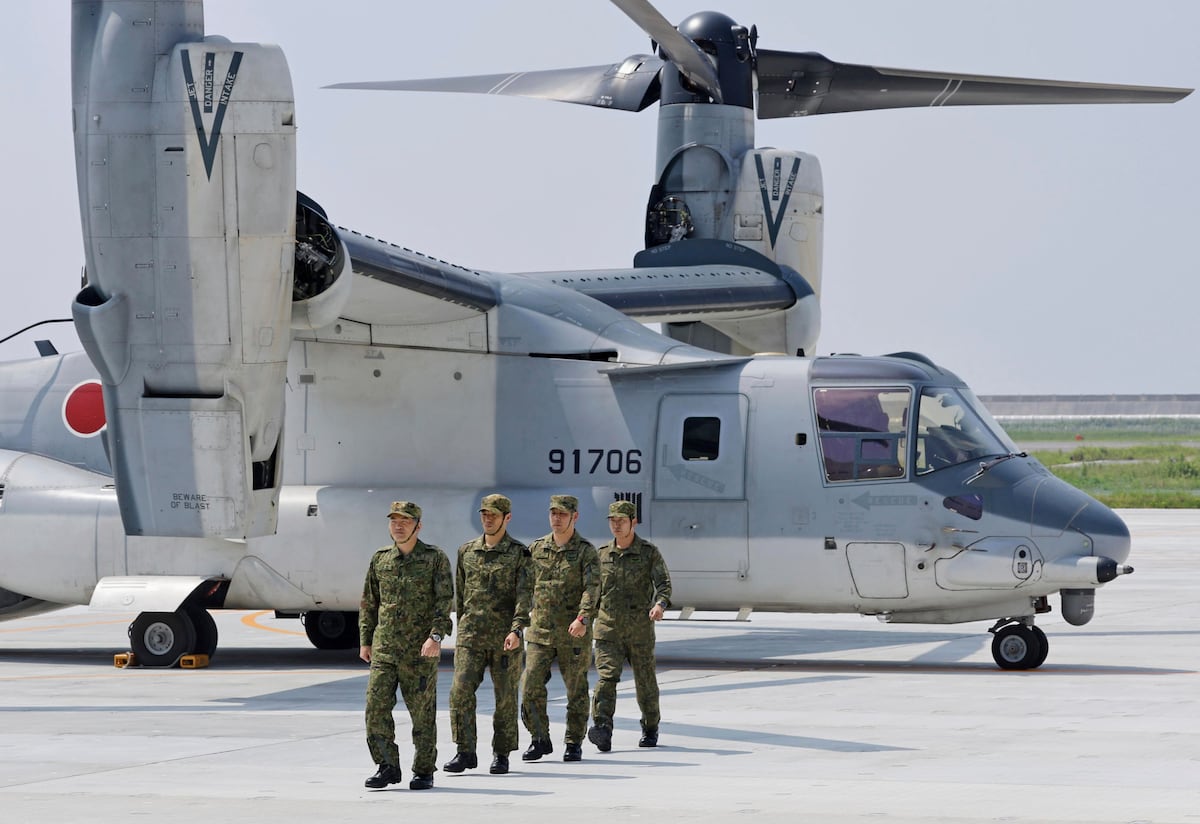
Japan Deploys Osprey Fleet to Strategic Kyushu Base Amid Rising Regional Tensions
Meta Description: Japan relocates V-22 Ospreys to Camp Saga near Taiwan Strait, boosting rapid-response capabilities as China tensions escalate. Safety concerns persist after fatal crashes.
Strategic Shift: Why Camp Saga Matters
Japan has launched a new frontline defense hub at Camp Saga in southwestern Kyushu, relocating its entire fleet of 17 V-22 Osprey aircraft from Chiba Prefecture. The base positions these tilt-rotor aircraft just 400 km from Taiwan—a critical response to China’s expanding military presence in the East China Sea.
Key Capabilities Enabled:
- Rapid Island Defense: Ospreys can transport Japan’s Amphibious Rapid Deployment Brigade (“Japanese Marines”) from Sasebo Base within minutes
- Hybrid Mobility: Vertical takeoff/landing like helicopters + fixed-wing speed (560 km/h cruise)
- Disaster Response: PM Ishiba emphasized dual-use for emergencies like earthquakes/tsunamis
Escalating Tensions Driving Deployment
China’s Growing Assertiveness
- Increased naval patrols near Senkaku Islands
- 45% surge in Chinese military flights near Taiwan ADIZ (2024 vs. 2023)
- Construction of artificial islands in South China Sea
Japan’s Countermeasures
| Initiative | Strategic Impact |
|---|---|
| Osprey deployment | 3x faster troop deployment to Nansei Islands |
| New missile units | Strike range covering Taiwan Strait |
| Joint drills with US | Enhanced interoperability for island defense |
“The security environment demands urgent reinforcement of southwestern defenses. This is about deterrence, not aggression.”
— Defense Minister Gen Nakatani
Safety Controversy: Protests and Past Tragedies
Despite military benefits, the deployment faces fierce local opposition:
- November 2023: U.S. Osprey crash off Yakushima killed 8 crew
- October 2024: Japanese Osprey crash during takeoff (human error confirmed)
- 62 fatalities in 63 Osprey incidents since 1991
Protesters’ Demands:
- “Complete removal of Ospreys” (Saga resident rally, July 9)
- Independent safety audits beyond government assurances
- Relocation away from civilian areas like Saga Airport
Operational Timeline and Future Plans
- Phase 1: First Osprey arrived July 9; 16 more to relocate by mid-August
- Phase 2: Joint exercises with U.S. Marines stationed in Okinawa
- Long-term: Integration with Aegis Ashore missile defense by 2027
Geopolitical Implications
- Taiwan contingency: 7-minute flight time reduction vs. previous Chiba base
- U.S. alignment: Strengthens alliance amid contested F-35 tech transfers
- Chinese response: State media condemns “artificial threat inflation”
FAQ: Japan’s Osprey Deployment
Q: Why Ospreys instead of helicopters?
A: Ospreys double troop transport speed and carry 24 troops vs. 14 in CH-47 Chinooks.
Q: Does this violate Japan’s pacifist constitution?
A: Deployment aligns with 2023 National Security Strategy permitting “counterstrike capabilities.”
Q: How will safety concerns be addressed?
A: New maintenance protocols and U.S.-led pilot training, though protesters demand third-party oversight.
Q: What’s China’s reaction?
A: PLA Daily accused Japan of “manufacturing crises to justify militarization.”
Key Takeaways
- Taiwan proximity makes Camp Saga Japan’s most strategic base since WWII
- Hybrid aircraft capabilities fill critical gap in island defense strategy
- Safety-vs-security debate reflects public skepticism after repeated crashes
- U.S.-Japan integration deepens as China tensions escalate
Next phase: 16 additional Ospreys to arrive at Camp Saga by August 20.
“This isn’t just about military posture—it’s about preventing war through credible deterrence.”
— Regional Security Analyst, Tokyo Foundation




.png?width=1200&height=630&fit=crop&enable=upscale&auto=webp)

